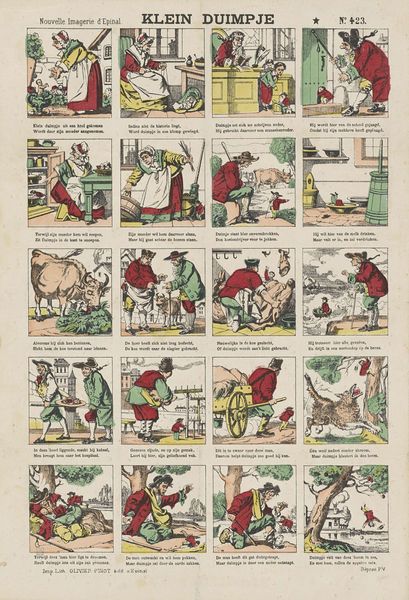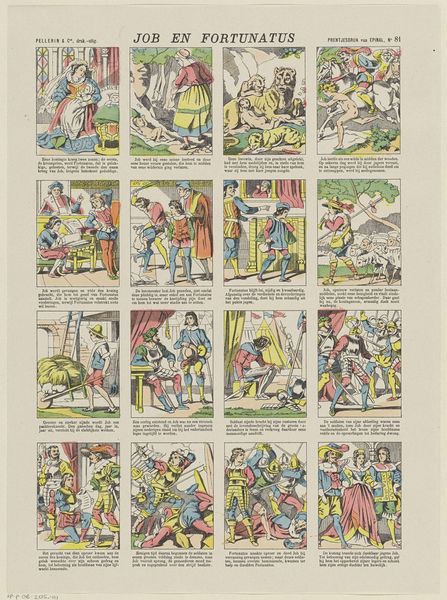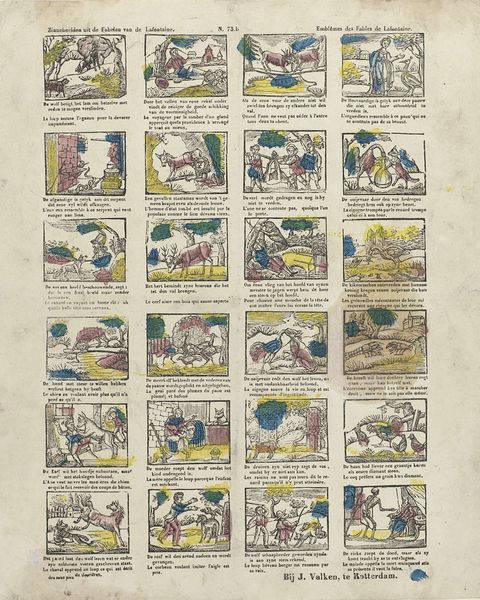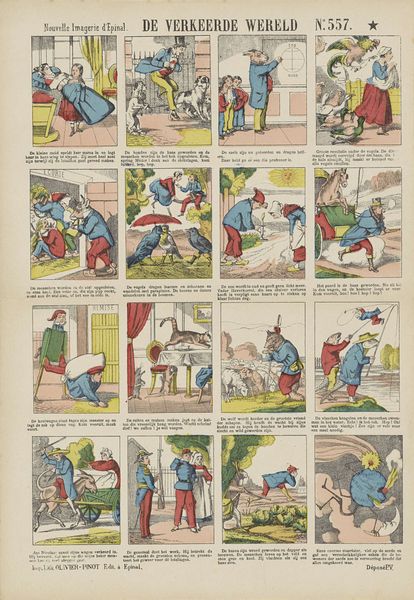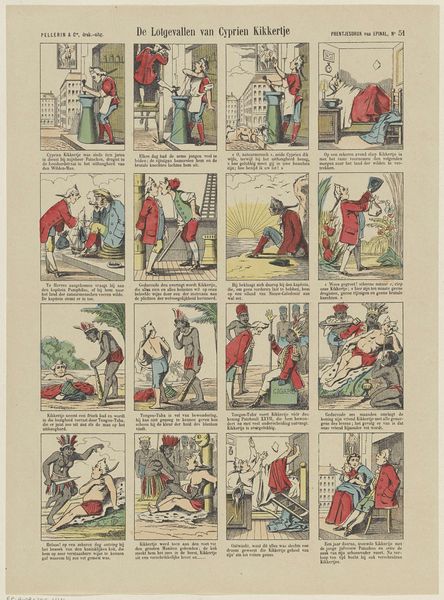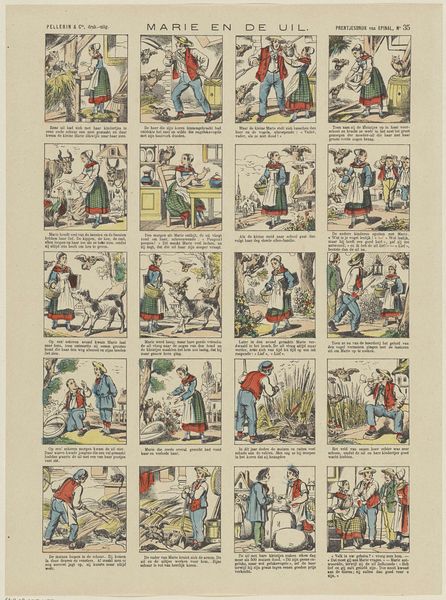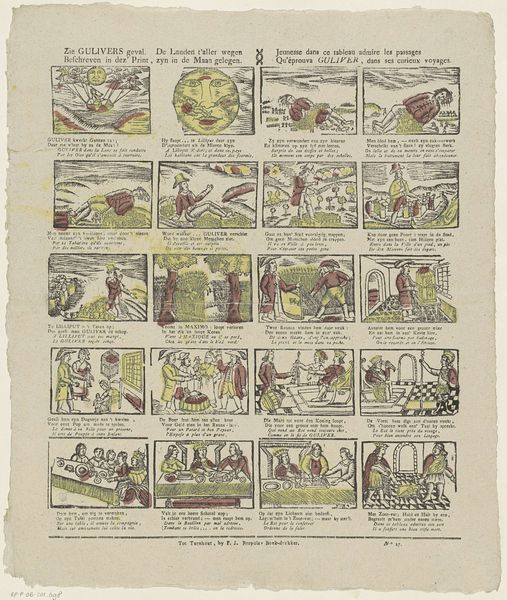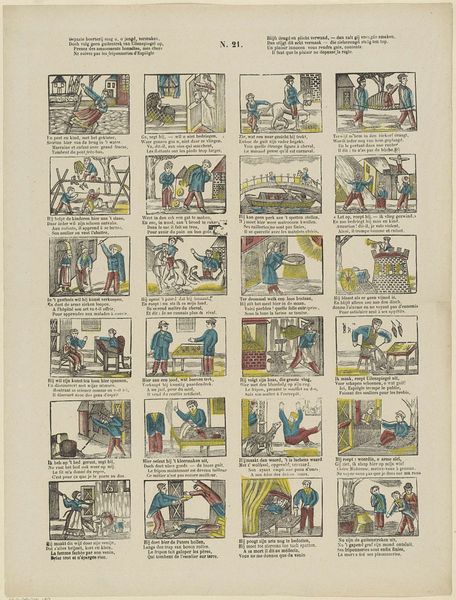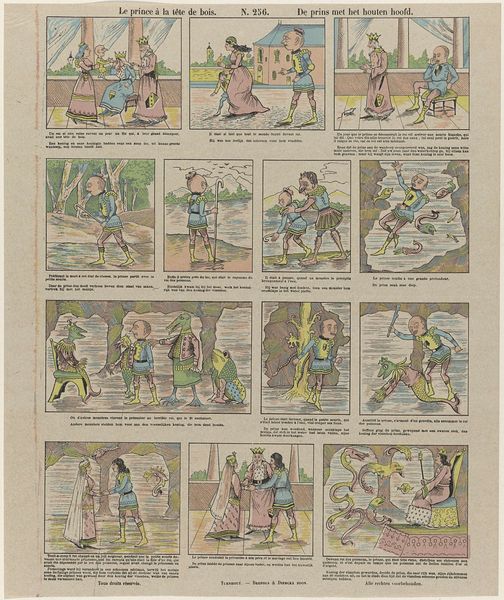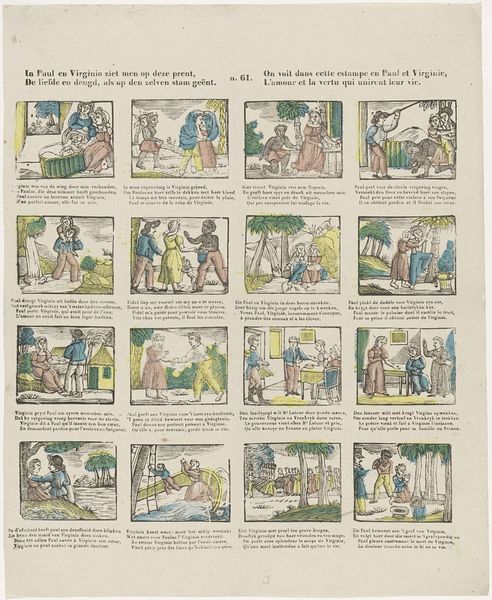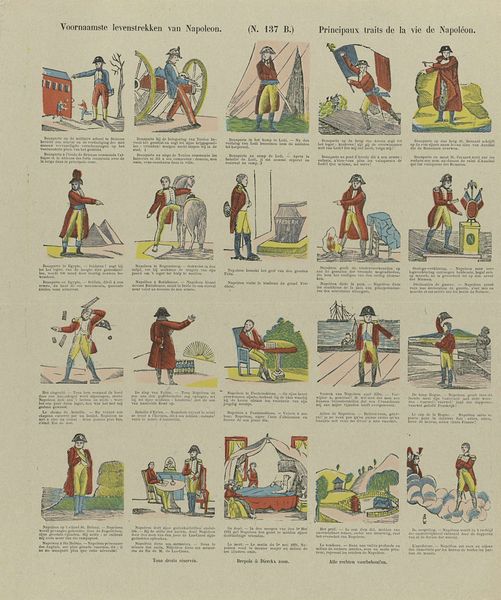
#
comic strip sketch
#
narrative-art
#
comic strip
# print
#
sketch book
#
traditional media
#
personal sketchbook
#
sketchwork
#
journal
#
comic
#
sketchbook drawing
#
storyboard and sketchbook work
#
sketchbook art
Dimensions: height 400 mm, width 279 mm
Copyright: Rijks Museum: Open Domain
Curator: We are looking at "The History of Robinson Crusoe," dating between 1874 and 1888, crafted as a print. Editor: At first glance, the piece appears like an early storyboard, maybe for an adventure film. Curator: Yes, it presents a sequential narrative. Robinson Crusoe, as a figure, represents more than just survival; he's a symbol of colonial resourcefulness, and anxieties surrounding societal collapse, viewed through a 19th-century lens. What social structures did Crusoe take with him, and how did he reimagine them on the island? Editor: From a material standpoint, the print process itself is telling. Mass-produced imagery like this served a function in disseminating ideology. This imagery also suggests a cultural fascination with narratives of survival and mastery over the environment, rendered cheaply for mass consumption. The question of what materials are available is the beginning of societal re-building. Curator: Precisely, the comic format would allow those without privilege, or without time to study traditional tomes, to receive information and entertainment. Moreover, let's address the implications of representing "the other"– how does Crusoe's relationship with Friday reflect the prevalent social hierarchy? Editor: It also seems relevant that the print uses cheaper materials – what does the image demand from the production and what is lost or highlighted through this exchange? The visual style reminds me of children’s book illustrations—does it simplify the social and economic narratives surrounding colonialism? Curator: It's imperative to unpack the orientalism latent in this interpretation. Robinson Crusoe’s narrative, through its reprinting and adaptation across eras, is really one big symbol regarding European colonialism, and so we must see this work critically! Editor: Considering this piece, it reminds me of the ways the history of colonialism can be understood through material production and labor as a method of exploitation—what’s more, these inexpensive prints offer a tangible view of popular cultural sentiments. Curator: In the end, by understanding its context, we expose how art like this serves not just as historical artifact, but as an active participant in perpetuating—or challenging—societal structures and ways of thinking. Editor: Indeed, an image such as this asks questions of accessibility, ideology, and consumerism across time.
Comments
No comments
Be the first to comment and join the conversation on the ultimate creative platform.
